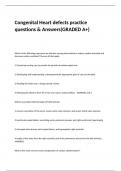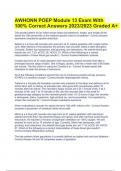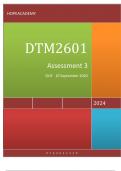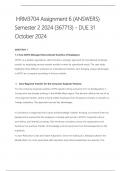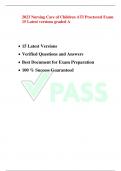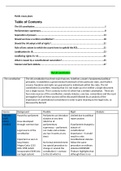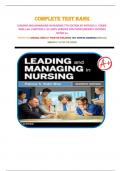Tentamen (uitwerkingen)
Congenital Heart defects practice questions & Answers(GRADED A+) Which of the following represents an effective nursing intervention to reduce cardiac demands and decrease cardiac workload? Choose all that apply. 1) Clustering nursing care to provide
- Vak
- Instelling
Which of the following represents an effective nursing intervention to reduce cardiac demands and decrease cardiac workload? Choose all that apply. 1) Clustering nursing care to provide for periods of uninterrupted rest. 2) Developing and implementing a developmentally appropriate plan of car...
[Meer zien]
